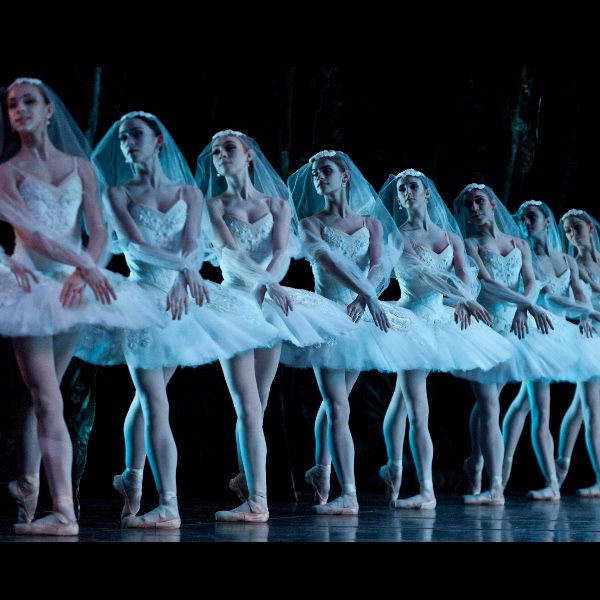In this three part series, Junior Girl and ballet dancer Georgia Licence examines the aesthetics of race and body in the ballet industry. In this first post, she looks at the legacy of white European ideals and cultural imaginations of the ballet industry as a whole, plus some of the notions challenging and pushing these boundaries now.
Ballet is a style of dance steeped in tradition and aesthetic ideals. This is the result of a long and unchanging history of the images we associate with it. We are all familiar with the idea of a fair, slim and elegant ballerina in a white tutu and pink ballet tights. This aesthetic remains firmly rooted in the origins of ballet and seems not to have adapted over time.
Ballet originated in the Renaissance period as an elite pass time for those with status in the French and Italian courts. The people who engaged with ballet at this time, and therefore the people who ballet has been moulded around, were predominantly white-European people. This has resulted in a white-European aesthetic that still prevails today. This is important for understanding the intersection between race and ballet, and the narrow segment of society that is represented within the industry.
The prevailing perception of classical ballet was born out of the nineteenth-century ‘Romantic era’ of literature and art. Romantic era ballet includes white swans, sylphs, and mystical creatures with an emphasis on their fair and virginal qualities. This was the time of the ethereal ballerina and has been known as the ‘Ballet Blanc’. Ballets such as Swan Lake are the epitome of the popular imagination of all things balletic, but also act to reinforce the exclusionary nature of the dance style.

The aesthetics of Romantic era still prevail in much of the classical ballet world today, as seen in this photo from the Australian Ballet website.
Arguably, there is a persistent idolisation of the Ballet Blanc. It is crucial, though, to acknowledge how simply accepting this ‘traditional’ imagery can be damaging. Take the photo above as an example, how many people do you know who look like the women in that picture? Probably not many. Equally, can you tell one apart from the rest? They all look identical.
It has been written that the authority of Tradition, and the historical legacy of this uniform aesthetic, may never be questioned. This means any evolution or progress will be stunted. Tradition is antithetical to development as it is, by nature, a static and unchanging phenomenon withstanding time. Many in the ballet industry believe that analysing and challenging the dominant aesthetic of the Ballet Blanc will simply remove the pleasure that the art form provides and, therefore, these ideas have largely been left unquestioned. For this reason, the legacy of ballet’s past remains in the homogenised, white aesthetic of today.
The power of classical ballet lays in the uniformity and the attention to detail, the beautiful formations and lines made by the many identical dancers of the corps (French for ‘body’ and meaning the group of ballerinas behind the soloists). This attention to detail is found at every level of the ballet production, from casting the dancers with the optimum ‘body type’ (Part 2 of this series will look at ballet bodies), to the discipline in rehearsals, and uniformity on stage.
How can this uniformity be damaging? There are many dimensions to the harm these uniformed stereotypes however, one primary example of how this is flawed in our society today is when you apply this to race.
I would like to say, at this point, that I am a ballet dancer myself and that I have found so much joy within my classes and the industry. Within these critiques, I am not neglecting all the wonderful things that have come out of ballet, I am simply suggesting we open our eyes to the issues that have been largely neglected.
Kealiinohomoku wrote an interesting paper in 1970 arguing for the idea that ballet is an ‘ethnic dance’. Her arguments were that ballet is a genre of dance produced by Western cultures, using French terminology, and the productions predominantly feature stylised European customs such as weddings and Christenings. The widely accepted definition of the word ‘ethnic’ is a group of people sharing common genetics, culture, or language. Classical ballets include European plants and animals like roses and swans, and the characters have European occupations such as soldiers and foresters. This suggests that, though we view classical ballet as a genre that is the ‘norm’, we are actually viewing dance from a Eurocentric approach. Dance studies frequently view ballet as the main example of technique, artistry and alignment, and other forms of dance are seen to be inferior or chaotic in comparison. Instead, we should regard ballet as one dance style, produced by the cultures in which it originated, amongst a plethora of equally valuable dance styles worldwide.
The concept of tradition should be challenged, and the Ballet Blanc aesthetic should perhaps be removed from the pedestal on which it has resided since the nineteenth century. By realising the racialised elements of the Ballet Blanc, and for critiquing it as a cultural construct rather than just taken as an aesthetic, we can begin to make a change.
-Georgia Licence
Junior Girl
Girl Museum Inc.
For more information, check out Joann Kealiinohomoku’s 1970 work, An Anthropologist looks at ballet as a form of ethnic dance
Part 2 of this series will look at ballet bodies and the unrelenting strive for perfection, and how ballerinas experience the beauty demands of society at a heightened level.
